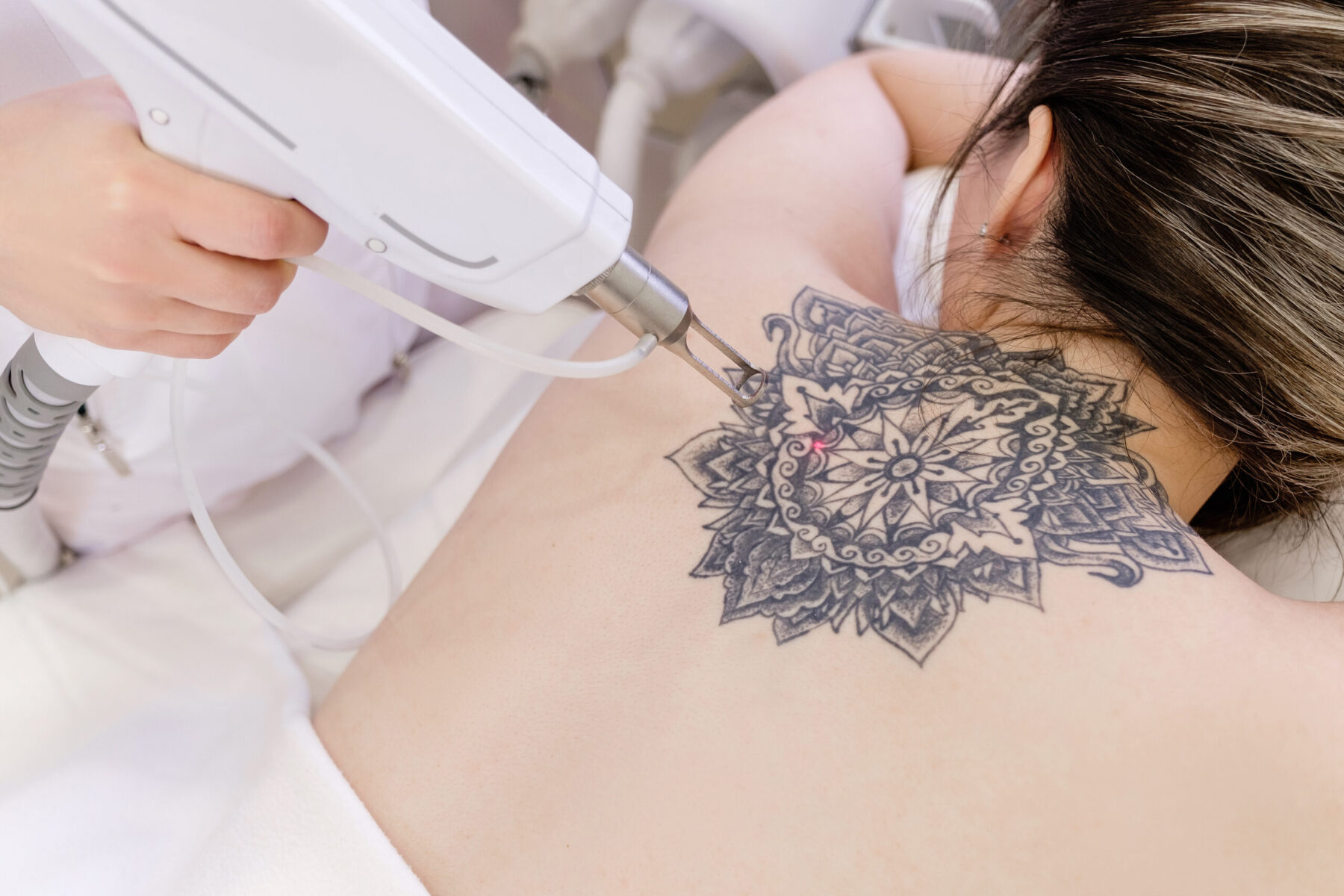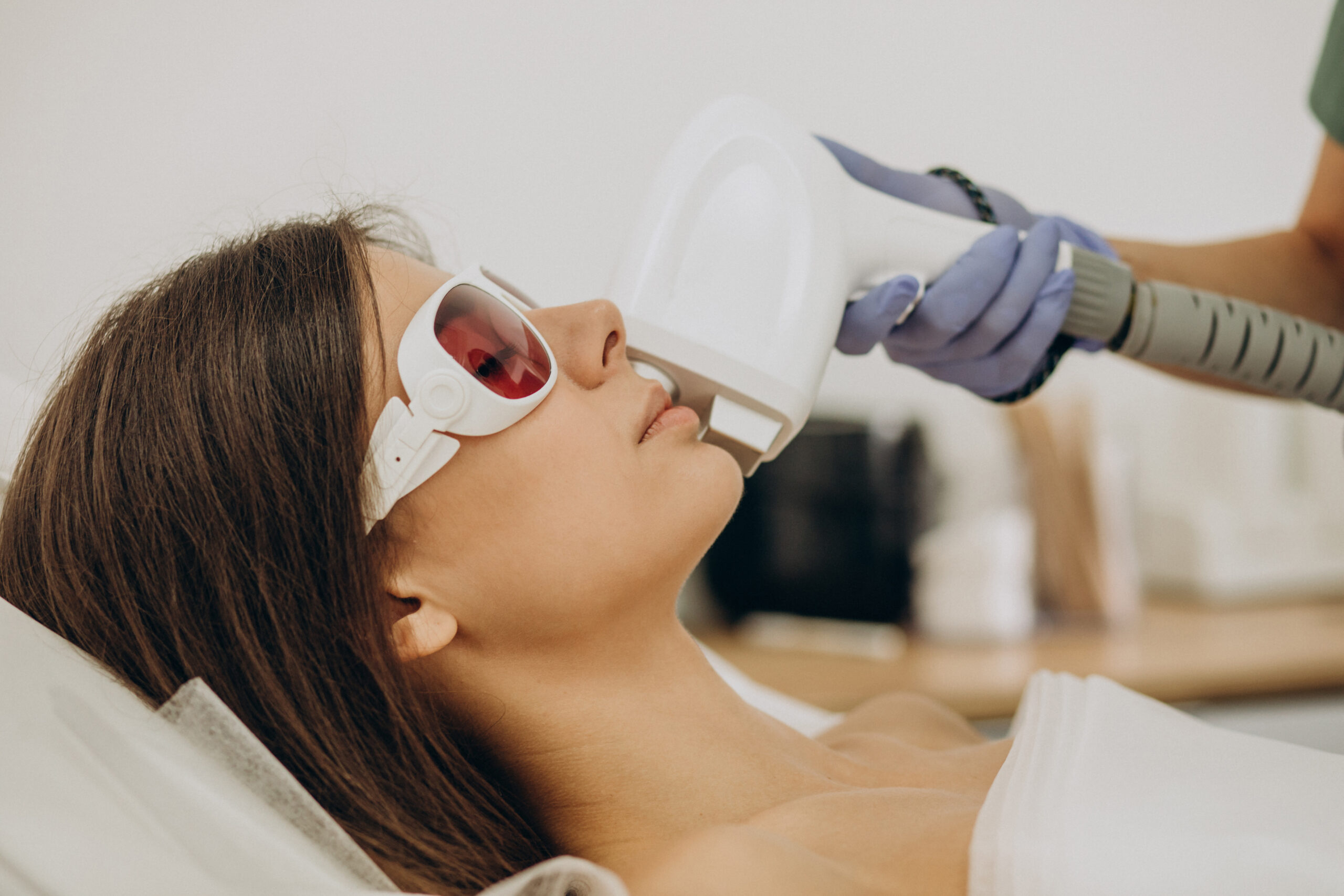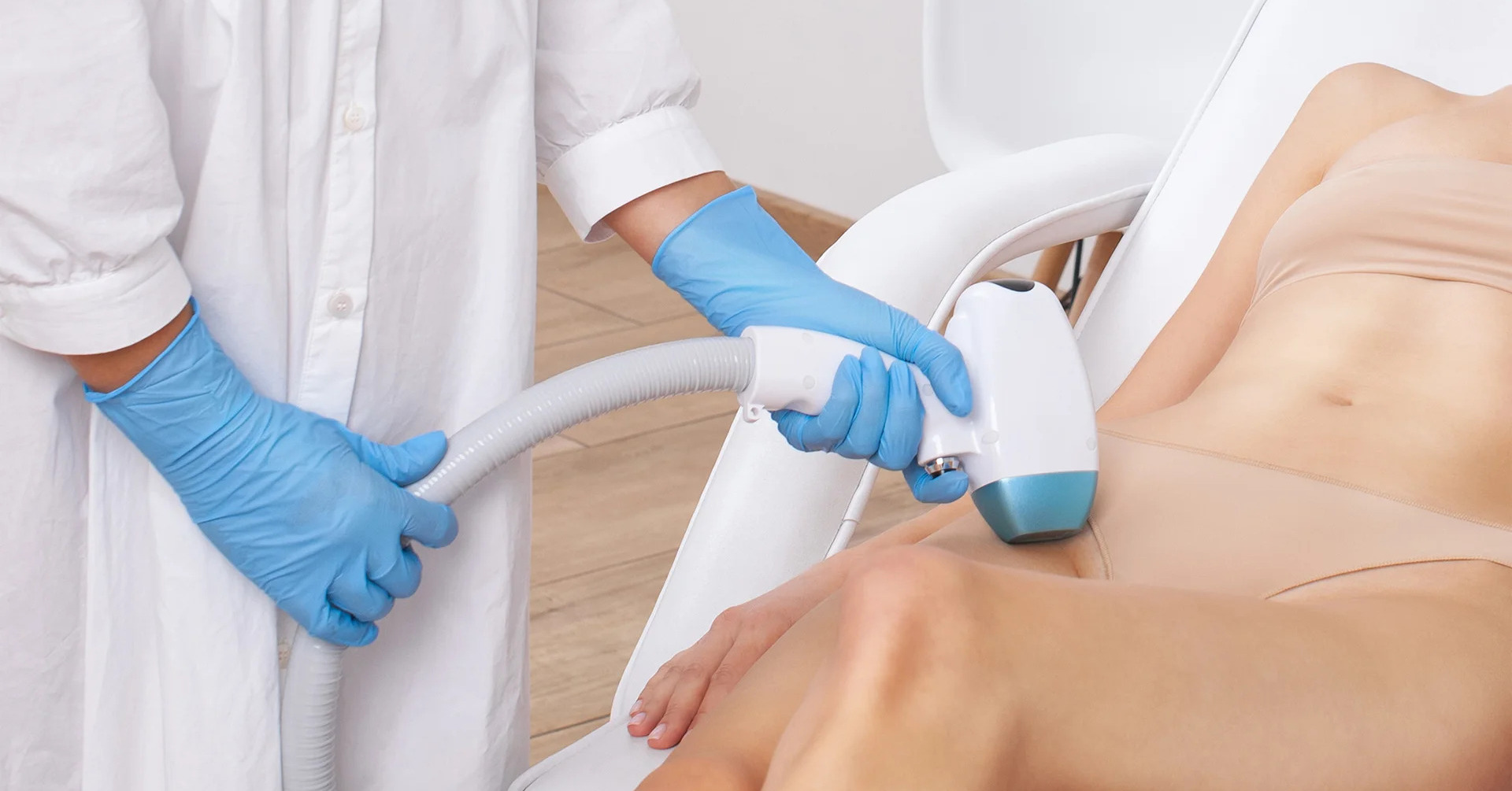

FAQs
Can You Conduct Laser Hair Removal Over Tattoos?
Modified: August 10, 2023
Discover what happens when you undergo laser hair removal over a tattoo. Find answers to common questions about this procedure and its impact on your ink.
(Many of the links in this article redirect to a specific reviewed product. Your purchase of these products through affiliate links helps to generate commission for Under-tec.com, at no extra cost. Learn more)
Table of Contents
Introduction
Are you considering laser hair removal but have a tattoo in the treated area? It’s important to understand the potential risks and outcomes before undergoing the procedure. Laser hair removal is a popular method of eliminating unwanted hair by targeting the hair follicles with concentrated light energy. On the other hand, tattoos are a form of body art that involve injecting ink into the skin’s dermal layer. Both laser hair removal and tattoos have become increasingly common practices, but what happens when the two collide?
In this article, we will explore the potential risks and outcomes of laser hair removal over tattoos. While laser hair removal can be an effective and safe method for permanent hair reduction, it can pose unique challenges and considerations when performed over tattoos. It’s essential to understand the implications to ensure the best possible outcome and minimize any potential adverse effects.
So, if you’re curious about what happens when laser hair removal is performed over a tattoo, read on to learn more about this intriguing intersection of practices.
Understanding Laser Hair Removal
Laser hair removal is a popular cosmetic procedure that aims to remove unwanted hair from various parts of the body. It involves using a laser device that emits a concentrated beam of light, which is absorbed by the pigment in the hair follicles. This light energy converts into heat, disabling the hair follicles and inhibiting further hair growth. The procedure offers a long-term solution for hair reduction, making it a desirable option for many individuals.
During a laser hair removal session, a technician or trained professional will use a handheld laser device to target the desired treatment area. The laser emits pulses of light that pass through the skin and target the hair follicles. The pigment in the hair follicles absorbs the light energy, which then converts to heat. This heat damages the hair follicles and inhibits their ability to produce new hair.
Laser hair removal is most effective on individuals with dark, coarse hair and fair skin. The contrast between the dark hair and light skin allows the laser to more effectively target the hair follicles, reducing the risk of damage to the surrounding skin. However, advances in technology have made laser hair removal more suitable for a wider range of skin and hair types.
The number of laser hair removal sessions required for optimal results may vary depending on individual factors such as hair thickness, the area being treated, and hormonal influences. Typically, multiple sessions spaced several weeks apart are necessary to target hair growth at different phases of the hair growth cycle. Each session gradually reduces the overall amount of hair in the treated area, leading to long-lasting hair reduction or even permanent hair removal in some cases.
Laser hair removal is generally considered a safe procedure when performed by a trained professional. However, it’s vital to understand the potential risks and side effects, especially when considering laser hair removal over tattoos, as the presence of tattoos can influence the overall outcome of the procedure.
Understanding Tattoos
Tattoos have been a form of self-expression and body art for centuries, with their origins dating back thousands of years. A tattoo involves injecting ink into the skin’s dermal layer, leaving a permanent mark or design. Tattoos can hold significant personal meaning or be purely for aesthetic purposes.
The process of getting a tattoo starts with a tattoo artist using a specialized machine with needles to puncture the skin. The ink is deposited into the punctured areas, creating a design or pattern that becomes a part of the individual’s skin. The depth at which the ink is inserted depends on the desired tattoo design, with some tattoos being shallower than others.
Tattoos can vary in size, color, and complexity. They can cover small areas or span large portions of the body, depending on the individual’s preference. Tattoo pigments can be made from a variety of substances, including mineral, organic, and plastic-based materials.
It’s important to note that tattoos are considered permanent, but they may fade over time due to natural skin cell turnover and exposure to the sun. Additionally, the appearance of a tattoo can be influenced by factors such as the quality of the ink used, the skill of the tattoo artist, and the individual’s skin type and lifestyle.
When considering laser hair removal over tattoos, it’s crucial to understand how tattoos and their pigments interact with the laser energy. Laser devices used in hair removal treatments are designed to target the melanin pigment in the hair follicles. However, tattoo pigments can also contain various pigments that may absorb the laser energy, potentially leading to adverse effects.
The composition of tattoo pigments can vary greatly, making some colors more responsive to laser energy than others. Darker colors, such as black and dark blue, tend to absorb more laser energy, while lighter colors, such as yellow and green, may be less responsive. It’s important to note that laser hair removal treatments may have different outcomes and risks depending on the specific colors and pigments used in the tattoo.
Overall, understanding the nature of tattoos and their interaction with laser energy is essential when considering laser hair removal treatments over tattooed skin. It’s crucial to consult with a knowledgeable professional to assess the risks, potential outcomes, and any precautions necessary to ensure a safe and effective procedure.
Potential Risks of Laser Hair Removal Over Tattoos
While laser hair removal is generally a safe and effective procedure, performing it over tattoos can introduce additional risks and complications. The presence of tattoos can greatly impact the laser’s effectiveness and may cause unwanted side effects. It’s important to be aware of these potential risks before deciding to undergo laser hair removal over tattooed skin.
One of the primary risks of laser hair removal over tattoos is the potential for unwanted changes to the appearance of the tattoo itself. The laser energy can interact with the tattoo pigments, causing fading, distortion, or even complete removal of the tattoo design. This can be particularly concerning if the tattoo holds significant personal meaning or sentimental value.
Another risk when performing laser hair removal over tattoos is the potential for skin damage. The laser energy can cause thermal injury to the surrounding skin, resulting in burns, blisters, or scarring. The risk of skin damage is increased when the tattooed area has darker pigments or is located in a more sensitive part of the body.
The risk of skin damage is also influenced by the type of laser used for hair removal. Some lasers are specifically designed to target hair follicles without affecting surrounding skin or tattoo pigments, while others may have a higher risk of causing adverse effects. It’s crucial to ensure that the laser device used is suitable for treating tattooed skin and that the technician performing the procedure has experience in laser hair removal over tattoos.
In addition to potential changes to the tattoo and skin damage, there is also a risk of experiencing discomfort or pain during the laser hair removal procedure. The presence of tattoos can increase the sensitivity of the skin, making the treatment more uncomfortable. The sensation during the procedure might be more intense, and some individuals may require additional measures, such as cooling techniques or topical numbing creams, to manage the discomfort effectively.
It’s important to note that the risks and potential outcomes of laser hair removal over tattoos can vary depending on several factors, including the size and location of the tattoo, the colors and pigments used, the laser device utilized, and the skill and experience of the technician. It’s crucial to consult with a qualified professional to assess the specific risks associated with your tattoo and develop an appropriate treatment plan.
Possible Outcomes of Laser Hair Removal Over Tattoos
When laser hair removal is performed over tattoos, the potential outcomes can vary depending on several factors, including the characteristics of the tattoo, the laser device used, and the individual’s skin type. It’s essential to understand these potential outcomes to make an informed decision about undergoing laser hair removal on tattooed skin.
One possible outcome of laser hair removal over tattoos is a reduction in hair growth. Laser energy targets the melanin pigment in hair follicles, inhibiting their ability to grow new hair. While laser hair removal can be effective in reducing hair growth, the presence of tattoos can complicate the process and potentially reduce the overall effectiveness of the treatment.
Another possible outcome is changes to the appearance of the tattoo. Laser energy can interact with tattoo pigments, causing fading or distortion of the tattoo design. Darker colors in tattoos, such as black or dark blue, may absorb more laser energy and, therefore, have a higher risk of being affected by the treatment. Lighter colors, such as yellow or green, may be less responsive to the laser and may experience fewer changes.
The extent of changes to the tattoo can vary depending on factors such as the tattoo’s age, the quality of the ink, and the individual’s skin type. In some cases, the tattoo may experience minimal alterations, while in others, the tattoo design may become significantly faded or distorted. Consulting with a professional before the procedure can help determine the potential impact on the tattoo and manage expectations accordingly.
In certain instances, laser hair removal over tattoos may lead to incomplete hair removal. The laser energy can be absorbed by the tattoo pigments instead of the targeted hair follicles, reducing the effectiveness of the treatment. This can result in patchy hair removal or the need for additional sessions to achieve the desired results.
Furthermore, there is a risk of experiencing skin damage as a possible outcome. The laser energy can cause burns, blisters, or scarring if not properly calibrated or used by an inexperienced technician. The risk of skin damage is heightened when treating tattooed skin due to the interaction between the laser and tattoo pigments. It’s essential to ensure that the technician performing the procedure has experience in laser hair removal over tattoos and uses appropriate safety measures.
Ultimately, the possible outcomes of laser hair removal over tattoos can be highly individualized. Consulting with a qualified professional who specializes in both laser hair removal and tattoo artistry is crucial to assess the specific risks, potential outcomes, and develop an appropriate treatment plan.
Precautions and Recommendations for Laser Hair Removal over Tattoos
Performing laser hair removal over tattoos requires careful consideration and adherence to specific precautions to minimize potential risks and achieve the best possible outcome. If you are considering laser hair removal on tattooed skin, here are some important precautions and recommendations to keep in mind:
1. Consult with a qualified professional: It’s crucial to seek the expertise of a trained and experienced professional who has knowledge and understanding of both laser hair removal and tattoos. They can assess your specific situation, evaluate the tattoo and its characteristics, and provide you with appropriate recommendations and treatment options.
2. Conduct a patch test: Before undergoing a full laser hair removal session over the tattooed area, it’s advisable to perform a patch test. This involves exposing a small portion of the tattoo to the laser to observe the skin’s reaction and the tattoo’s response. The patch test can help identify any potential adverse effects and guide the course of action for the actual treatment.
3. Consider the age and quality of the tattoo: Older tattoos may have settled into the skin and may be less responsive to laser energy compared to newer tattoos. Additionally, the quality of the ink used in the tattoo can affect how it interacts with the laser. Discussing these factors with the professional can help manage expectations and determine the potential impact on the tattoo during laser hair removal.
4. Choose the right laser and settings: Laser devices specifically designed for hair removal on tattooed skin should be used to minimize the risk of adverse effects. These lasers may have different wavelengths or settings that allow for selective targeting of hair follicles while reducing the impact on tattoo pigments. The professional performing the treatment should have access to suitable laser devices and adjust the settings accordingly.
5. Protect the tattoo with a barrier: If deemed appropriate by the professional, it may be necessary to apply a protective barrier, such as a cooling gel or a layer of light-reflecting material, over the tattoo during laser hair removal. This barrier can help minimize the absorption of laser energy by tattoo pigments and reduce the risk of unwanted changes to the tattoo’s appearance.
6. Follow proper aftercare instructions: After undergoing laser hair removal over a tattoo, it’s crucial to follow the recommended aftercare instructions provided by the professional. This may involve avoiding exposure to direct sunlight, applying soothing creams or ointments, and refraining from activities that may irritate or damage the treated area. Proper aftercare can contribute to a smoother healing process and minimize the risk of complications.
It’s important to remember that every tattoo and individual’s skin may react differently to laser hair removal. Therefore, it’s essential to consult with a qualified professional who can assess your specific situation and provide personalized recommendations and precautions.
Conclusion
Laser hair removal is a popular and effective method for reducing unwanted hair, but when it comes to treating tattooed skin, there are additional considerations and potential risks to be aware of. Understanding the possible outcomes and taking necessary precautions can help minimize these risks and achieve the best possible results.
Performing laser hair removal over tattoos can lead to changes in the appearance of the tattoo, including fading, distortion, or even removal of the tattoo design itself. The interaction between the laser energy and tattoo pigments can also increase the risk of skin damage, such as burns or scarring. Therefore, it’s crucial to consult with a qualified professional who is experienced in both laser hair removal and tattoo artistry.
Patch testing and evaluating the tattoo’s age and quality are important steps in assessing the suitability of laser hair removal on tattooed skin. Choosing the right laser device and settings is crucial for minimizing the impact on the tattoo while still effectively targeting the hair follicles. Applying barriers or protective measures over the tattoo during the procedure, if recommended, can also help reduce the risk of adverse effects.
Following proper aftercare instructions provided by the professional is essential to promote proper healing and minimize complications. Everyone’s tattoo and skin may respond differently, so it’s important to be realistic about the potential outcomes and manage expectations accordingly.
If you are considering laser hair removal over tattoos, it’s important to consult with a qualified professional who can assess your specific situation and provide personalized recommendations and precautions. They can guide you through the process and help ensure the best possible outcome while prioritizing the safety and integrity of both the tattoo and your skin.








